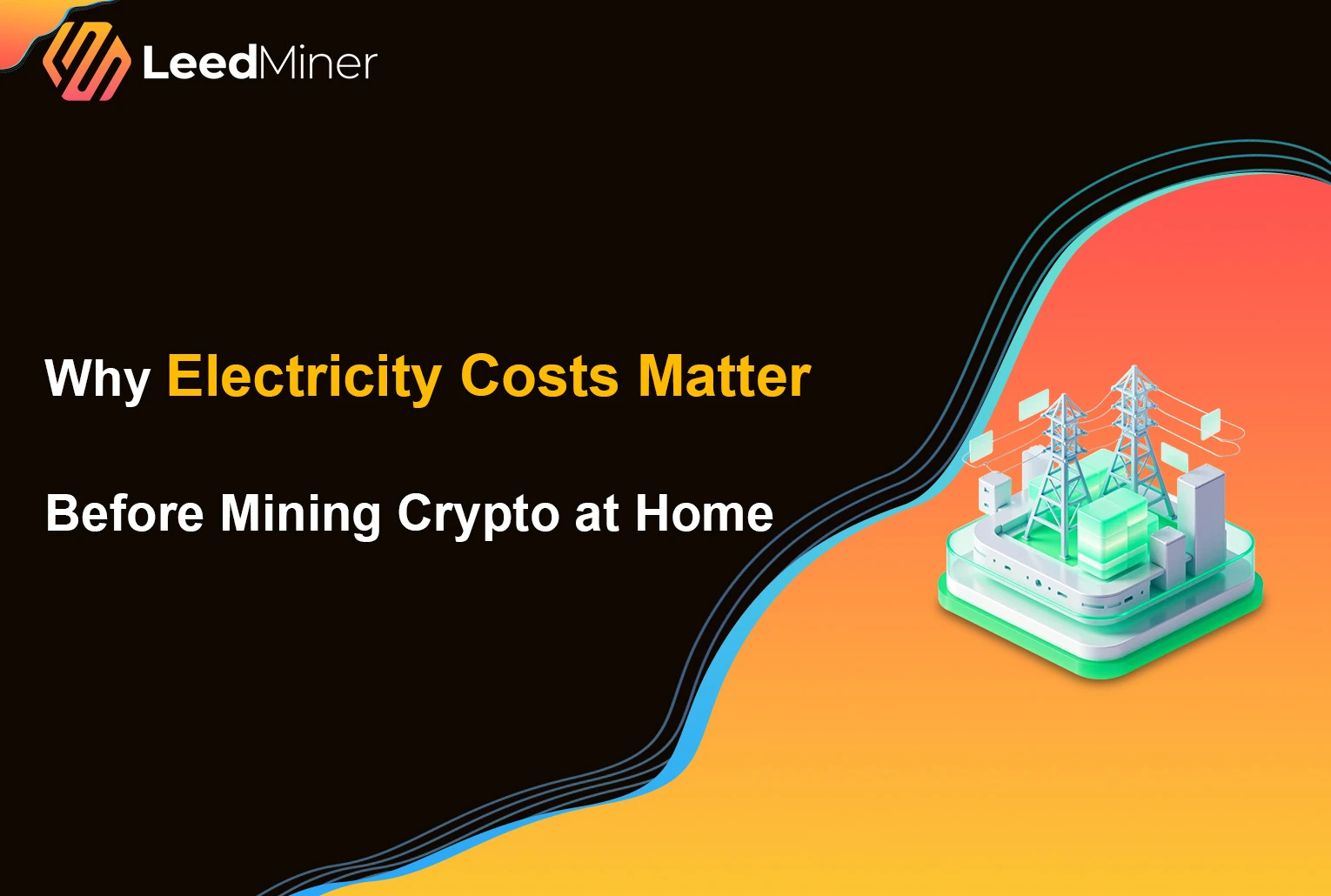SUMMARY
Cryptocurrency mining has become an increasingly popular way to earn digital assets by contributing computing power to secure blockchain networks. However, mining is not just about owning powerful hardware — one of the most significant factors affecting your profitability is the cost of electricity. In fact, electricity expenses often make up the largest ongoing cost for any mining operation, big or small.
In this article, we’ll explain why electricity costs matter so much in crypto mining, how to calculate your costs, and what you can do to optimize your power usage for better profits.
What Is Electricity Cost in Mining?
Electricity cost refers to the amount you pay for the electric power consumed by your mining hardware. It is usually measured in kilowatt-hours (kWh). Each miner consumes a certain amount of power (watts), and the longer it runs, the more electricity it uses.
For example, if your miner uses 1000 watts (1 kW) and runs 24 hours a day, it will consume 24 kWh of electricity daily. If your local electricity rate is $0.10 per kWh, your daily electricity cost will be 24 kWh × $0.10 = $2.40.
Understanding this basic calculation helps you estimate how much mining costs in terms of power consumption.
How Electricity Costs Affect Mining Profitability
Mining profitability depends on the revenue you generate minus your costs. Electricity cost is often the largest recurring expense.
A useful metric to measure this is the Electricity Ratio, which is the percentage of your mining revenue spent on electricity.
- If the Electricity Ratio is below 30%, mining can still be profitable.
- If the ratio is above 30%, profits shrink, and the risk of losses increases.
For example, if your miner earns $10 per day but your electricity cost is $3, your Electricity Ratio is 30%. This means 30% of your income goes directly to paying for power.
Keeping this ratio low is key to sustainable mining.
Factors Influencing Electricity Costs
Several factors affect how much electricity you pay for mining:
- Regional electricity rates: Prices vary widely between countries and even cities. For instance, electricity in the US might be $0.12/kWh, while in some parts of China or Iceland it could be under $0.05/kWh.
- Home electrical infrastructure: Older homes or apartments may have limited electrical capacity or unstable grids, affecting how much power you can safely use.
- Miner efficiency: Different mining rigs have different power efficiencies, measured as joules per terahash (J/TH). More efficient miners deliver higher hash rates for less electricity.
- Energy source: Some miners use renewable energy or benefit from off-peak rates, reducing effective electricity costs.
How to Calculate Your Mining Electricity Costs
To estimate your mining electricity cost:
- Find your miner’s power consumption in watts (W).
- Multiply by the number of hours it runs daily (usually 24).
- Convert watts to kilowatts (divide by 1000).
- Multiply by your local electricity rate ($/kWh).
Formula: Power (W) ÷ 1000 × Hours × Electricity Rate = Daily Electricity Cost
For example: 3500W miner × 24 hours = 84000 Wh = 84 kWh If electricity costs $0.07/kWh: 84 kWh × $0.07 = $5.88 per day
You can also use online calculators such as the LeedMiner Miner Profitability tool to input your electricity rate and miner specs to see detailed estimates.
Tips to Reduce Electricity Costs in Mining
- Choose energy-efficient miners: Look for models with low joules per terahash (J/TH).
- Mine during off-peak hours: Some regions offer cheaper electricity at night.
- Improve cooling efficiency: Better cooling reduces additional energy used by fans or AC units.
- Use renewable energy: Solar or wind can offset costs if available.
- Plan power load: Avoid overloading circuits to prevent inefficiencies or outages.
What Happens If Electricity Costs Are Too High?
If your electricity costs exceed your mining income, you will run at a loss. This leads to:
- Prolonged payback periods or no return on investment.
- Potentially shutting down miners or selling hardware.
- Needing to switch to more profitable coins or mining methods.
High electricity costs limit the scalability of mining and require miners to continuously optimize for efficiency.
Conclusion
Electricity cost is a critical factor that can determine whether your mining operation is profitable or not. Understanding your power consumption, local rates, and efficiency of your equipment is essential before investing in mining hardware.
Use profitability calculators, monitor your electricity ratio, and take steps to reduce power costs whenever possible. Proper planning and management of electricity expenses can help you mine cryptocurrencies sustainably and successfully.
Here are the FAQs and a 12-word summary for your blog:



